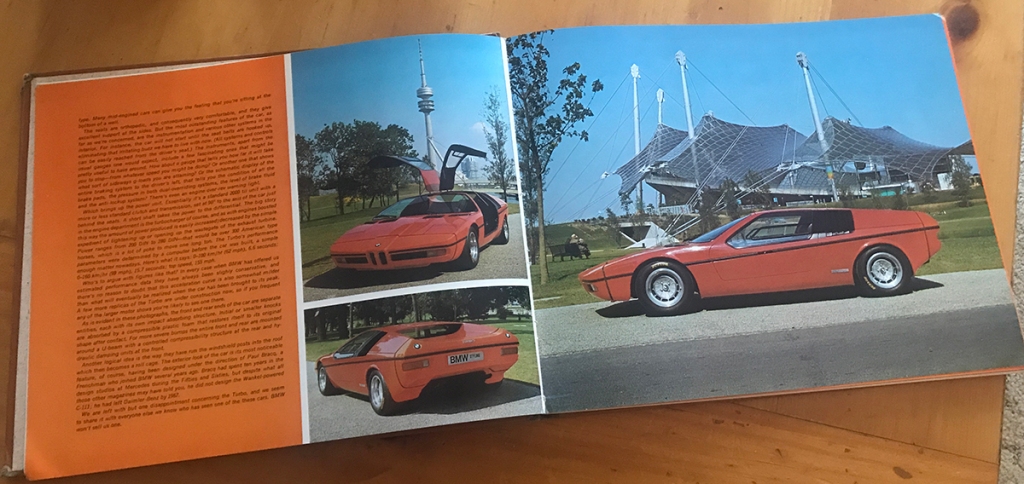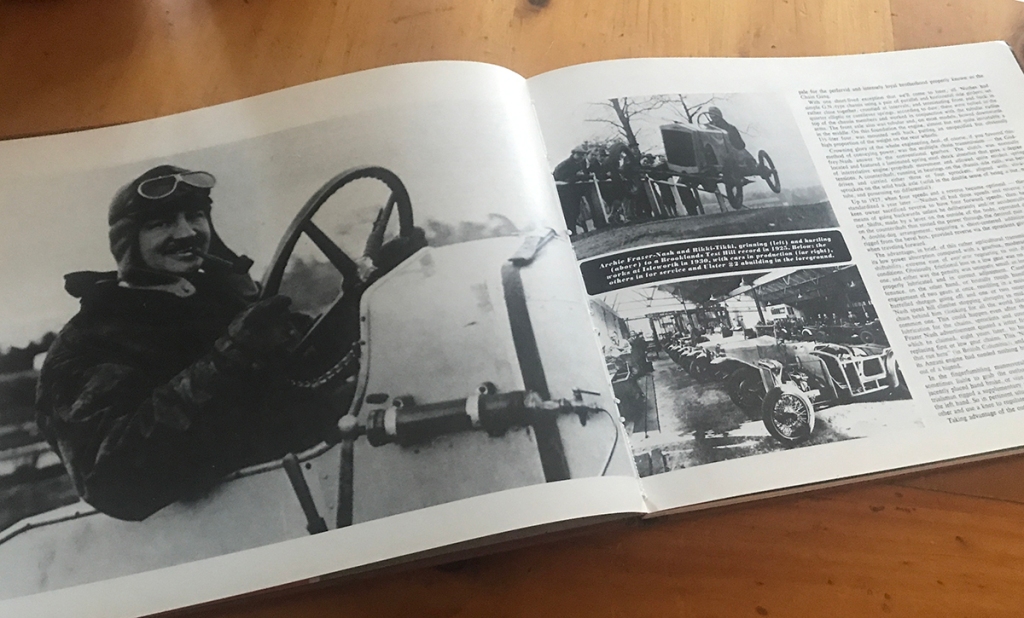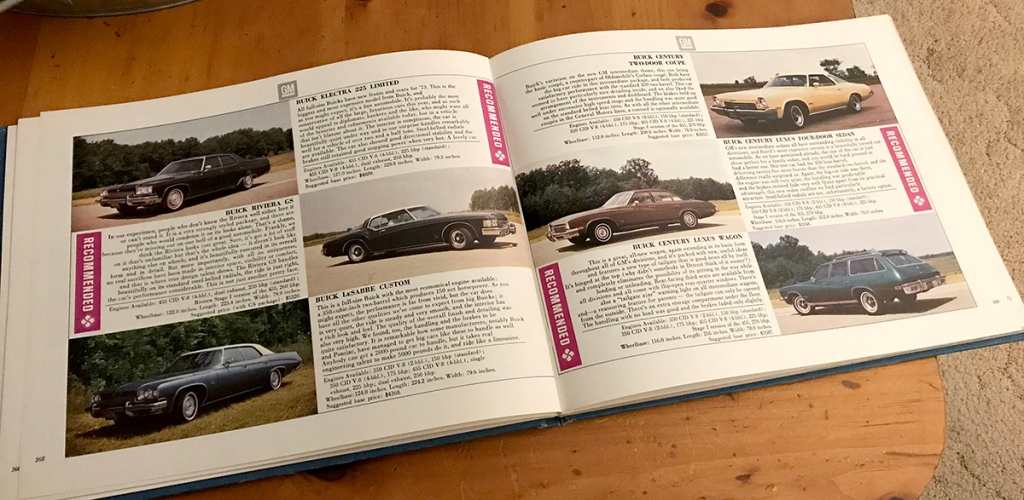Automobile Quarterly Volume 11, Number 1 edited by Don Vorderman
published 1973 by Automobile Quarterly
112 pages, hardcover
Library of Congress number: 62-4005
Acquired in a lot of 20 issues of AQ.
When I acquired the lot of Automobile Quarterly issues, I decided I’d read them chronologically. As long-time readers know, I got my first issue of AQ a number of years ago, and I have a few special issues and books published by AQ, but it was only recently that I added more regular issues, some which were consecutive. I wanted to see if, like standard magazines, there were any columns or articles that appeared regularly. For example, in AQ VII:I, there was a motorsport review, while in AQ X:IV, there was a notes and corrections page. In Automobile Quarterly, Volume 11, Number 1, it seems there’s no trace of anything like this.
I’ve written that I really have enjoyed everything I’ve read from AQ. It was a high quality publication, with good photography and well-written, well-researched articles. Books such as Buick: A Complete History are very thorough. But with AQ XI:I, I find maybe not every issue hits me the same way. That’s not to say AQ XI:I wasn’t of the same quality as other editions, but I wasn’t as taken with this issue.
First off, as may be guessed by my lapse between posts, I’ve simply not had time to read and blog. But, I found I wasn’t thrilled with the content, which made it difficult to push through this edition. Now those points say more about me than the book, but it’s fair to say this edition wasn’t really compelling me to make time to read, either.

The first article focused on the 1972 BMW Turbo concept, a gull-wing mid-engine design by Paul Bracq. This short article was a good start. It did interest me, as I immediately recognized the concept as the design inspiration for the 1978 BMW M1 sports car as well as the BMW 8-series coupes of the 1990s. The M1 was actually refined by Giugiaro, and was one of the early supercars I became familiar with as a kid. I always found these to be interesting, distinct from the typical BMW styling and very in keeping with the wave of 1970s ‘wedge’ sports cars. Only 2 of the Turbo concepts were made, conceived initially as a safety car. Very interesting to see the Turbo and realize it’s role in BMW development.


Next up were 4 closely-related articles that explored the Frazer Nash. Not to be confused with either of American carmakers Kaiser-Frazer or Nash, Brit Archibald Frazer-Nash had been manufacturing Godfrey-Nash cycle cars with partner HR Godfrey before going it alone in 1924. The Frazer Nash cars produced pre-World War II were chain-driven sports cars, produced in small numbers, approximately 350 between 1924 and 1939. A change in company ownership and a partnership with BMW eventually produced another 80 or so cars that were based closely on the BMW 328. The company eventually merged into Bristol Aeroplane Company.


Now, as I’ve experienced, some AQ articles are difficult reads when one is unfamiliar with the subject. To me, there’s just so much information, much of it quite detailed and sort of assumes the reader is acquainted with the subject. I this case there was just a lot of tech info, racing results and corporate notes it’s a lot to process. The 2 ‘driving impressions’ articles, one for a chain driven car and one for a later BMW-based LeMans Replica were great.

An article on Mazda’s refinement of the Wankel rotary engine and what Mazda was importing to North America was a little dry. Written in the early 1970s, there are a couple of attempts to emphasize the ‘oriental’ angle, which would likely have been seen as humour but today are pretty clunky and dated. It was an informative article that gave a good history of Mazda and the Wankel engine. Of course, as this was 1973, it’s an early history.


I enjoyed the profile on racing legend Tazio Nuvolari. As with the story I’d read on Rudi Caracciola, I found myself drawn to this early racing star. Weirdly, though I don’t know much about early racing, I find the stories of these drivers compelling. So many fantastic drivers have passed through history, I mean we talk about Verstappen, Hamilton, Senna, Earnhardt, Fittipaldi, Andretti, Foyt, Fangio, Hill, that the pioneers like Nuvolari are almost never mentioned. It’s wonderful to read his story.



Finally, I got a look at the Peerless story. I’d already learned a great deal on Packard and Pierce-Arrow, so it was great to finally educate myself on the third of ‘the Three Ps’ of American luxury autos. I found it a much easier story to follow that the Frazer Nash article, perhaps because it focused less on racing and more on vehicle development and company history. The reproduced vintage ads for Peerless are really great. There’s a short overview of the 1931 Peerless V16 prototype, which looks like a stunning automobile, and a short article does touch in Peerless’ racing history.

There is a 2 page advertisement for AQ’s books, which as it turns out, I own 2 of the 6 featured, and finally a notes page that really just contains photo credits and thanks.
All in all, this particular issue of AQ didn’t grab hold of my interest as others have, although it had to compete with numerous distractions. I do give credit to this issue for covering what I’d consider less mainstream subjects. In the 2020s, I really don’t see many references to Frazer Nash, and Peerless cars are quite rare. Mazda only recently announced they’d produce rotary engines again after a 10-year hiatus in their passenger cars. For that, I maintain AQ serves well as a great resource that does well to illuminate parts of automotive history that may be in danger of fading from view.
Pros: the usual high quality AQ production, great period photos
Cons: can be difficult to push through articles one is unfamiliar with due to the intense detail level
Where to find it: used bookstores, private collections























































